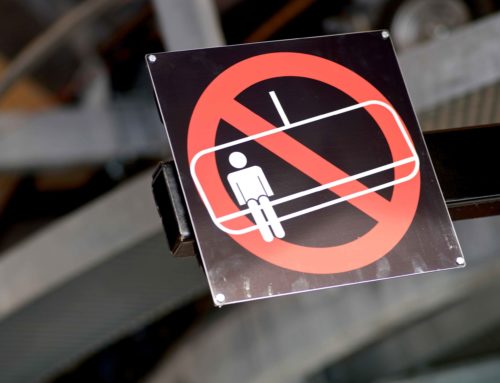
Management & Tourism, SI World 2/2023
Industry Topic Boomerang Hiring
What was once almost unthinkable is now more common than some might believe: the return of employees to their former employers. Personnel experts call this „Boomerang Hiring.“ According to the research institute Visier, Boomerang employees already make up more than a quarter of companies‘ annual external hires.
But how do employers and employees view this phenomenon, what are the advantages and disadvantages of rehiring, and how should ski resorts and the supply industry proceed? An overview.
What do employers think?
According to a study by the Workforce Institute & Workplace Trends, 76 percent of HR professionals consider Boomerang Hiring to be significant. However, there are also skeptics: when the separation is initiated by the employee, most employers do not give a second chance.
The study also shows that 40 percent of HR professionals have rehired half or more of the former employees who reapplied.

What do employees think?
On the other hand, the job portal Indeed surveyed employees: around 39 percent of the 1,000 student respondents aged 16 to 65 can imagine returning. However, nearly half (49 percent) rule out a return.
Almost one-third of respondents have already taken this step: 17 percent have returned in the same position, 13 percent in a higher position, and five percent in a lower position. Studies by Workplace Trends and the job platform Blind yield similar numbers: 15 percent of all employees have returned to a former employer, and 40 percent of respondents say they would consider returning to a company where they previously worked.
What‘s particularly interesting is that 46 percent of Millennials (Gen Y), 33 percent of Generation X, and 29 percent of Baby Boomers express this tendency. Age plays a role in the Indeed study as well: the motivation to return to an old employer decreases with age; more than half of those over 35 cannot imagine a return.
In the younger generation, only about 29 to 39 percent reject a return. Men are somewhat more likely to return to their old job than women: about 39 percent of the surveyed men have already returned to a former employer, compared to only 29 percent of women.

Why do employees come back?
According to the HR consultancy Harbinger and the Visier Institute, employees resign to advance their careers, acquire new skills, or receive higher pay.
The desire for change, family situations, or seasonal work are other motives. The reasons for returnees are equally diverse and individual.
Most Boomerang employees thought that other companies would offer them more – a better work environment, more flexibility, better career advancement or development opportunities, etc. However, they found that they were better off at their former company.
Leadership Insider also lists the following reasons: no onboarding or support at the new employer, a wrong role description during the job interview, dislike of the company culture and new colleagues, and a lack of work-life balance.

Advantages of Boomerang Hiring
The benefits of rehiring are evident: the former employee can quickly get up to speed, is familiar with the team and company culture, and can start immediately. A well-maintained talent pool, including former employees and potential Boomerang employees, gives employers much more flexibility.
Moreover, the returnee brings experiences and best practices from other companies into the organization. It‘s no wonder that according to Workplace Trends, 90 percent of recruiters view former employees positively, with only 14 percent having a „negative“ view.
Lastly, Boomerang Hiring is beneficial for employer branding. According to LinkedIn, a whopping 75 percent of candidates check company reviews on platforms like Kununu, Glassdoor, and more.
Rehiring a Boomerang employee can strengthen the employer‘s brand, indicating that the company values lasting relationships with its talents.

Disadvantages of Boomerang Hiring
What speaks against rehiring? Harbinger‘s HR experts expect that the performance of Boomerang employees generally remains the same after rehiring. Internal and external new hires usually outperform Boomerang employees.
Additionally, the new old colleagues often remain open to change and are fickle: they have already resigned once and are more likely to do so again.
How to succeed in Boomerang Hiring?
For rehiring to even be an option, employers must stay in touch with former employees – or reach out to them if they don‘t return on their own.
This can be done through social networks or alumni programs. The prerequisite, of course, is that the parting was amicable.

Boomerang Hiring – a matter of money?
In any case, HR professionals need strong arguments for rehiring: higher pay is very important or important for about 71 percent of respondents, according to the Indeed study.
This is confirmed by the Visier Institute: employees who return to a former employer earn an average of 25 percent more than they did at the time of their resignation.
Additionally, the introduction of additional benefits, which 51 percent of respondents consider at least important, can be helpful. About 44 percent say that returning to a familiar work environment with a similar team, in the same office, and with familiar work processes would make the decision easier.
In contrast, more responsibility in the company and different tasks than before are considered unimportant or very unimportant (18 and 17 percent).

Assessing opportunities
According to the HR consultancy Harbinger, the return interview is crucial. HR managers should determine the intentions of the former employee and their return ambitions.
The stronger the employee‘s desire to return, the better the company‘s negotiating position. HR professionals should also ask why the Boomerang Employee would leave their current company.
Consider critical timeframes
The longer employees stay away from the organization, the lower the chances of a return.
According to Leadership Insider, the critical timeframe for rehires is 13 months, but it can take up to 36 months for them to be rehired. However, return opportunities significantly decrease after 16 months of absence.
So, it‘s best to cast the Boomerang today!







